Zotac GeForce RTX 2070 Super Twin Fan Compute Related Benchmarks
As we move along with the GPU testing we felt it was time to clean up our database and results in graphs, we have dropped the Silent and OC results for each card and kept the fresh out of box numbers. Doing so made our graphs much easier to read, many users here at STH do not run cards in those configurations or simply cannot do so in Linux based systems so this was warranted. We still have our test numbers and might revisit those settings later on.
Geekbench 4
Geekbench 4 measures the compute performance of your GPU using image processing to computer vision to number crunching.
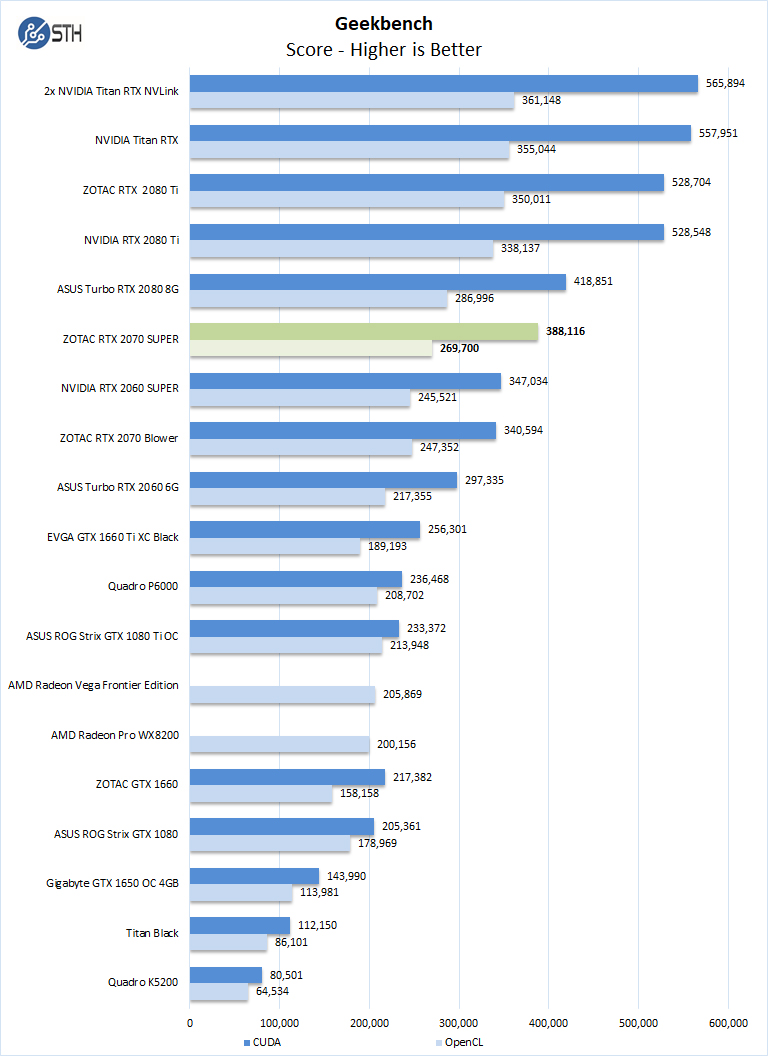
Our first compute benchmark we see the Zotac GeForce RTX 2070 Super Twin Fan achieve results close to the ASUS Turbo RTX 2080 8G which is something we expect to see in later benchmarks, perhaps even higher results.
LuxMark
LuxMark is an OpenCL benchmark tool based on LuxRender.
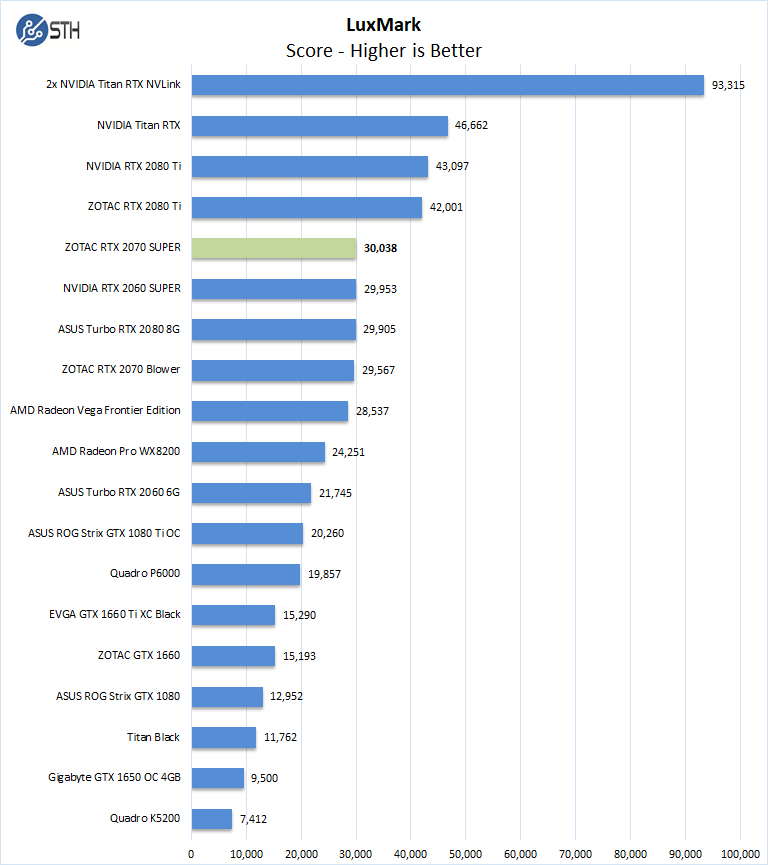
With Luxmark results, we find the Zotac GeForce RTX 2070 Super Twin Fan just passing the ASUS Turbo RTX 2080 8G which is a Blower style card, in this benchmark we see only a slight edge over the NVIDIA RTX 2060 SUPER.
AIDA64 GPGPU
These benchmarks are designed to measure GPGPU computing performance via different OpenCL workloads.
- Single-Precision FLOPS: Measures the classic MAD (Multiply-Addition) performance of the GPU, otherwise known as FLOPS (Floating-Point Operations Per Second), with single-precision (32-bit, “float”) floating-point data.
- Double-Precision FLOPS: Measures the classic MAD (Multiply-Addition) performance of the GPU, otherwise known as FLOPS (Floating-Point Operations Per Second), with double-precision (64-bit, “double”) floating-point data.
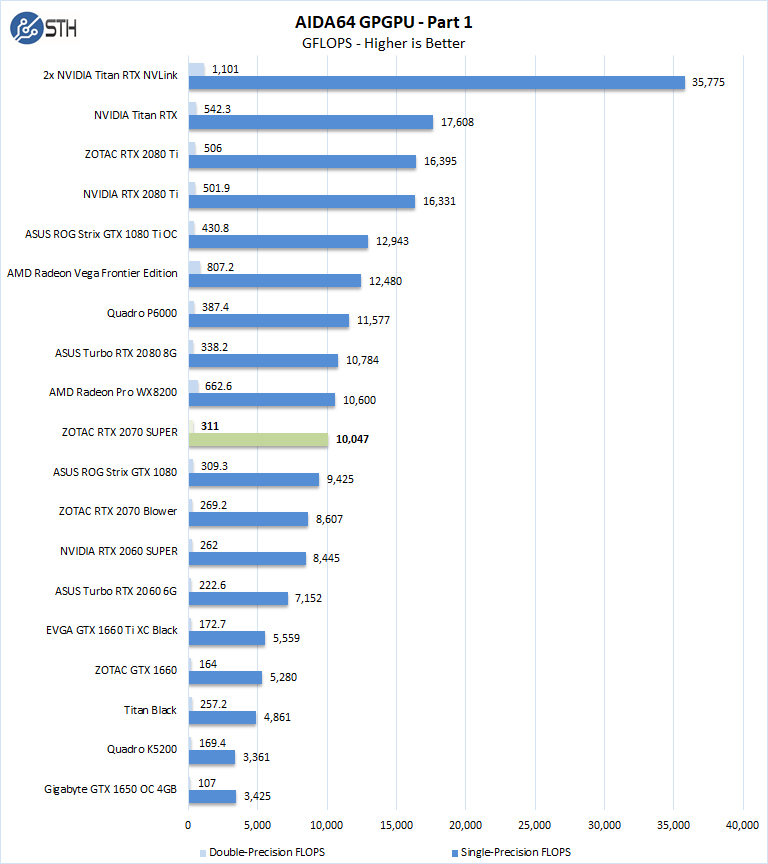
Here, the AMD Radeon Pro WX8200 and ASUS Turbo RTX 2080 cards beat the Zotac GeForce RTX 2070 Super Twin Fan by 6-8% on single precision. The AMD card is more than twice as fast on the double-precision side.
The next set of benchmarks from AIDA64 are:
- 24-bit Integer IOPS: Measures the classic MAD (Multiply-Addition) performance of the GPU, otherwise known as IOPS (Integer Operations Per Second), with 24-bit integer (“int24”) data. This particular data type defined in OpenCL on the basis that many GPUs are capable of executing int24 operations via their floating-point units.
- 32-bit Integer IOPS: Measures the classic MAD (Multiply-Addition) performance of the GPU, otherwise known as IOPS (Integer Operations Per Second), with 32-bit integer (“int”) data.
- 64-bit Integer IOPS: Measures the classic MAD (Multiply-Addition) performance of the GPU, otherwise known as IOPS (Integer Operations Per Second), with 64-bit integer (“long”) data. Most GPUs do not have dedicated execution resources for 64-bit integer operations, so instead, they emulate the 64-bit integer operations via existing 32-bit integer execution units.
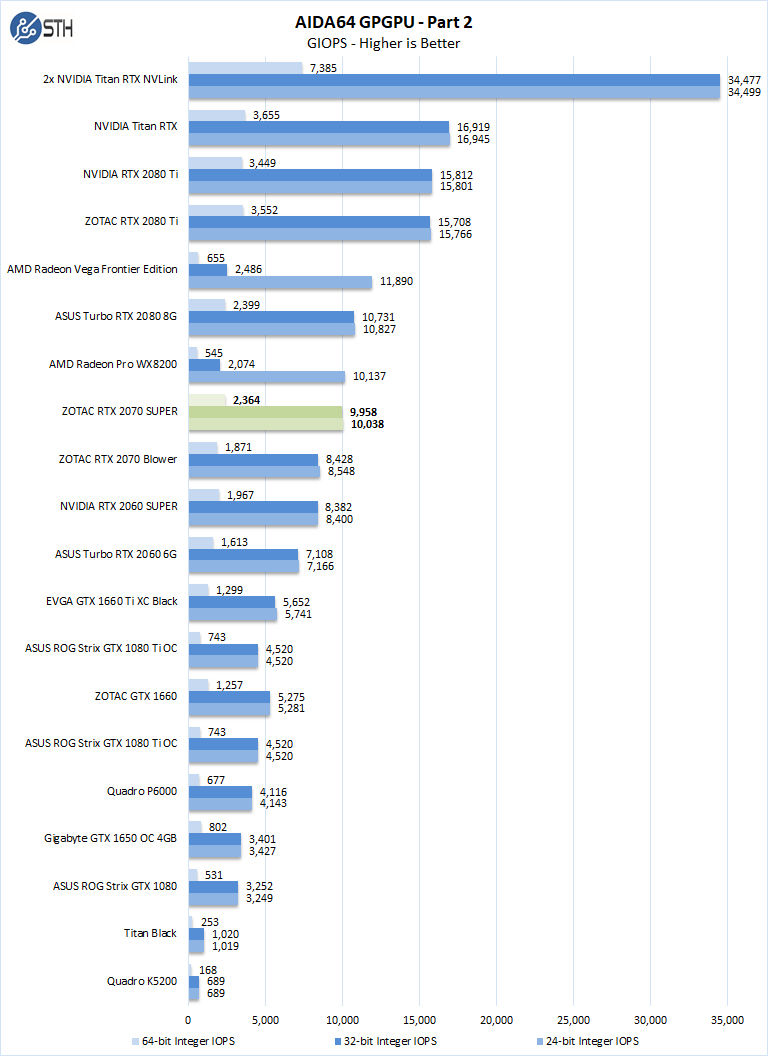
The take away here is the Zotac GeForce RTX 2070 Super Twin Fan performs almost at RTX 2080 rates. The AMD Radeon Pro WX8200 also falls behind in the 64-bit and 32-bit integer IOPS.
hashcat64
hashcat64 is a password cracking benchmark that can run an impressive number of different algorithms. We used the Windows version and a simple command of hashcat64 -b. Out of these results we used five results to the graph. Users who are interested in hashcat can find the download here.
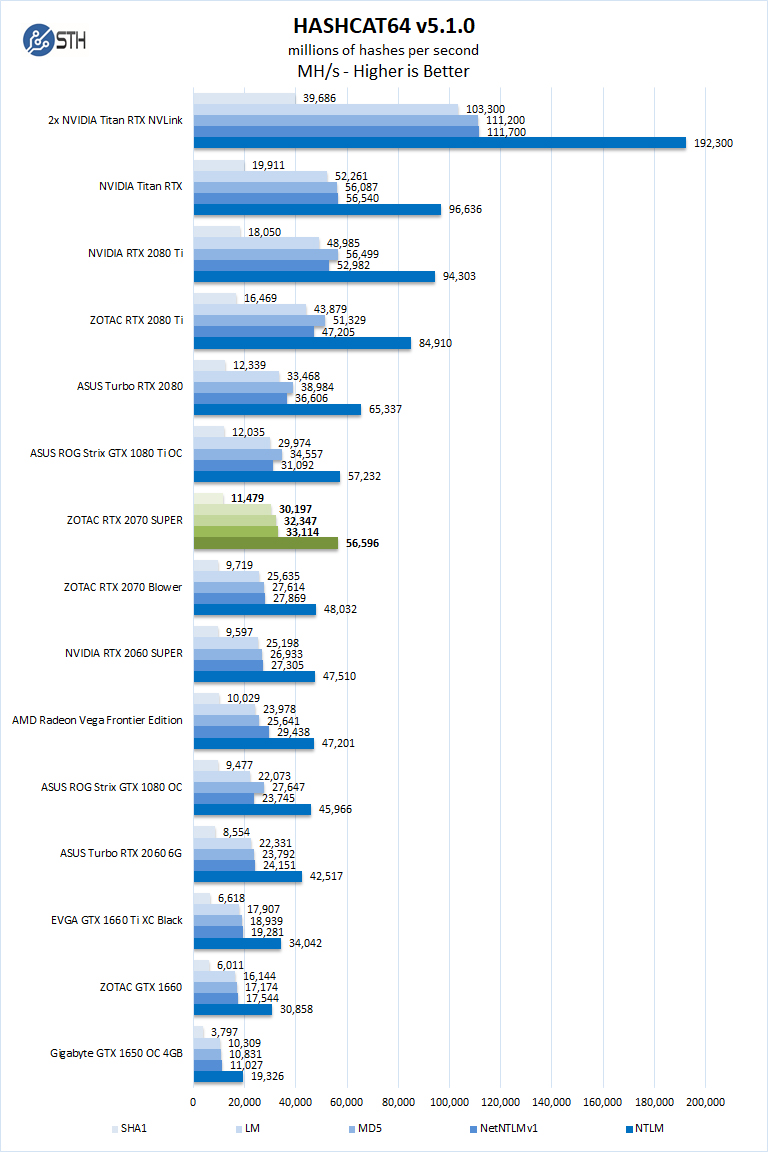
Hashcat64 is a demanding benchmark which heats up GPUs. Here we see the Zotac GeForce RTX 2070 Super Twin Fan fall were we would expect it to after seeing our results from previous tests.
SPECviewperf 13
SPECviewperf 13 measures the 3D graphics performance of systems running under the OpenGL and Direct X application programming interfaces.
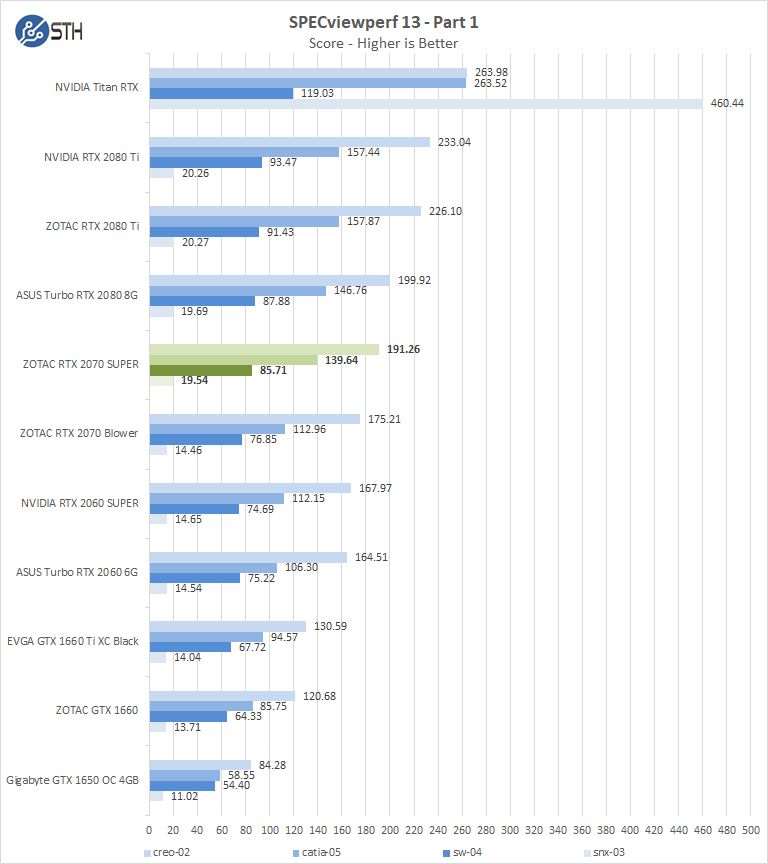
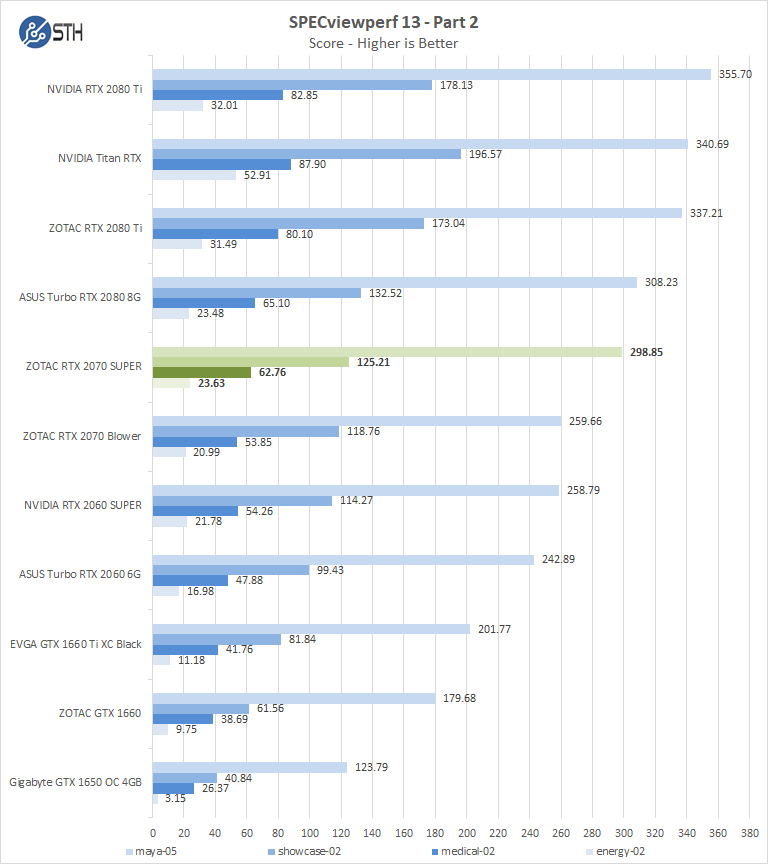
Again we see the Zotac GeForce RTX 2070 Super Twin Fan is still just shy of what we saw with the ASUS GeForce RTX 2080 we were using.
Let us move on and start our new tests with rendering-related benchmarks.




I can downclock this card’s GPU. For example, limiting the maximum GPU frequency to 1000MHz? In this case I will use it for neural network training that can last several days on a 24 hour basis.
This is really a good graphic card. It was much awaited. I have already ordered one and it’s on the way.
Thank you for providing the detailed review. You’ve covered every aspect, much appreciated.
where are the gaming benchmarks and how loud is the card.
This review answers none of the questions games want to see :(